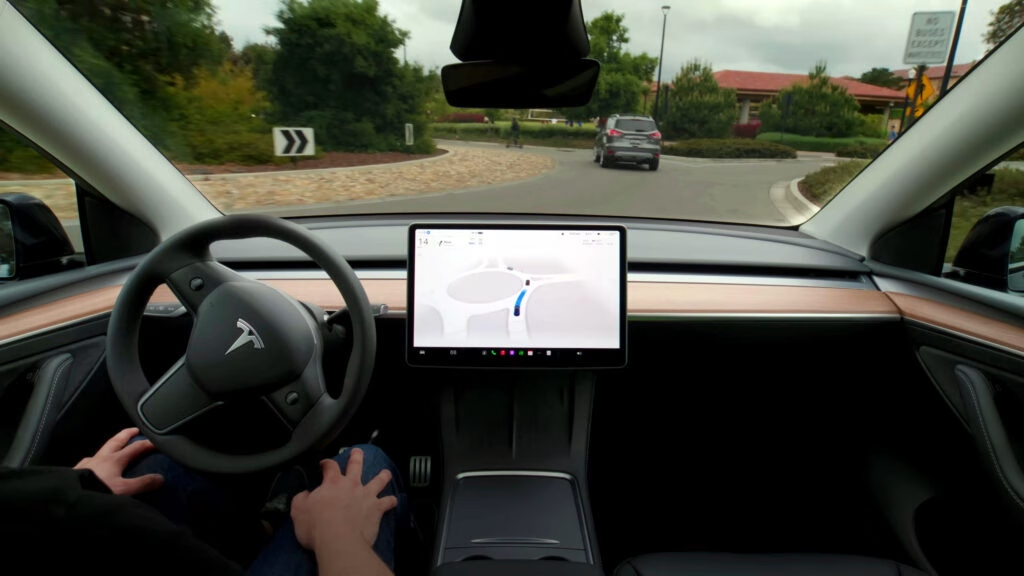The European Union is currently contemplating a significant shift in its approach to regulating self-driving technology, potentially mirroring the more lenient standards seen in the United States. This change could have far-reaching implications, particularly for automakers like Tesla, who have faced stringent regulations in Europe that have hampered their semi-autonomous driving systems.
Could Looser Regulations Mean Lower Tariffs?
One of the driving forces behind this potential regulatory overhaul is the EU’s desire to ease trade tensions with the U.S. By adopting U.S.-style self-driving car rules, the EU could reduce the hefty 25% tariffs currently imposed on vehicle imports and parts. This move could provide a much-needed boost for German automakers, who have been struggling with declining sales in the U.S. market. The pressure is mounting, and it seems the EU is ready to reconsider its historically rigid stance on automotive regulations.
The EU’s current framework for self-driving technology is among the most stringent globally, often requiring third-party testing for certification. However, if the EU decides to allow automakers to self-certify, as is the case in the U.S., it could significantly streamline the process for companies looking to introduce semi-autonomous features. This would represent a dramatic shift from a decade ago when the EU’s strict regulations were a major sticking point in transatlantic trade negotiations.
What’s Behind This Regulatory Shift?
The backdrop to this potential change is a series of discussions between EU political leaders and executives from major automotive companies like BMW, Volkswagen, and Mercedes-Benz. These discussions have focused on the impact of tariffs and the need for a more favorable regulatory environment to stimulate sales and innovation. The ongoing tariff war, initiated during the Trump administration, has left many automakers in a precarious position, and the EU’s willingness to adapt could be a strategic move to alleviate some of that pressure.
Tesla, in particular, has been vocal about its frustrations with European regulations. While its semi-autonomous driving systems are widely available in the U.S., they face significant limitations in Europe. Currently, these systems can only be used on divided roads where cyclists and pedestrians are not present, and even then, only on roads with speed limits of 130 km/h (80 mph) or less. Looser regulations could open the door for Tesla to expand the capabilities of its Full Self-Driving (FSD) system, allowing for a more versatile driving experience across Europe.
What’s Next for Tesla and Other Automakers?
While there’s no guarantee that the EU will adopt these changes, the discussions signal a willingness to explore options that could benefit both the automotive industry and consumers. If implemented, this shift could allow Tesla and other manufacturers to leverage their self-driving technologies more effectively, potentially leading to increased sales and innovation in the sector.
Moreover, even if the regulatory changes stall, Tesla’s diversified global production footprint provides a buffer against the challenges posed by any one region’s regulations. This adaptability is crucial in a rapidly evolving automotive landscape where technology and consumer expectations are constantly shifting.
The big takeaway? Regulatory changes in the EU could pave the way for more advanced self-driving technologies, benefiting both automakers and consumers alike. It’s not just about easing tariffs; it’s about fostering innovation and adapting to the future of transportation. Keep an eye on these developments—one small regulatory shift could lead to significant advancements in how we drive.

